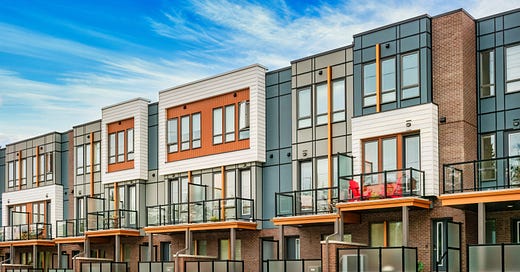A Message for Council: Time to Build Optimism
We share some planned remarks for next week's public hearing
Below is Frank Johnston’s planned remarks to council for next week, April 22. We thought it was a wonderful encapsulation of the issue and provides a compelling case for Rezoning for Housing. Please consider joining Frank in speaking at the public hearing next week!
My hope is my neighbours and all Calgarians can look beyond their property line, and past the end of their block, to see the benefits that will flow from upzoning.
Appreciation
I wish to thank the members of council for this opportunity to speak and, as well, to thank the many Calgarians who are contributing their thoughts to this important process.
My comments today draw on the experiences my family and I have had from our 34 years as residents in West Hillhurst. I will speak on how the rebuilding of our community has affected its character and its impacts on housing crisis, including homelessness.
The Research Is In
The data is in. Upzoning improves housing affordability. The research is persuasive and has shaped my understanding of what is possible in Calgary. Approval of the proposed bylaw will trigger benefits for my family, and I believe for our community and the whole of our city. Other jurisdictions with widely diverse politics such as Edmonton to the north and Montana to the south believe this too. Upzoning is a public response that frees up entrepreneurs to respond creatively to market demand while achieving important social goals.
Change is Hard but Essential
The construction of new housing has transformed our neighborhood and has been the biggest negative impact of redevelopment. But this impact has been transitory. The offset has been an influx of young families and a revitalized community: local businesses have flourished, the public tree canopy has largely been maintained, and in contrast to fears expressed by others, the value of our property has increased by many multiples. Although the look of our street has changed dramatically over the years, we find the claim that the new bylaw would mean the loss of the essential character of our neighborhood to be overstated. To us, there is little difference between a row of massive single family houses and row housing. Our community’s physical character has never been fixed; it has evolved ever since the first backhoes arrived to dig up the cow pasture for the original bungalows.
The change in my neighborhood that does concern me is the composition of the residents. Its rebuilding has favored the well-to-do. My wife and I were able to purchase a ‘50s bungalow even though we earned no more than an average income. But today we would be excluded and so would many of our original neighbors—these are folks with less income: the single parent, the maintenance worker, the young couple, the student, and seniors like my wife and I who might require different accommodations if we are to age in place. A greater mix of housing types would help restore a balance in our community of people from different walks of life and different economic status.
Homelessness is a Part of My Community
Yvonne, a middle-aged women, brought us face-to-face as property owners with the direct connection we have to homelessness. We found her one bitterly cold night sheltering between our garage and the neighbor’s. She said she had no choice than to sleep where she did. Her story is only one of many that occur across the inner city each day. Homelessness exerts a terrible burden on its victims and it imposes costs on communities like West Hillhurst as well.
The research demonstrates that allowing housing alternatives cheaper than single-family units triggers a series of moves whereby households can step up the affordability ladder. People in inadequate housing can trade up to something better while people at the bottom may able to find safe and stable accommodation.
For too long we have collectively accepted homelessness to be just be a part of the background to big city life. It’s convenient to pretend we have no responsibility to relieve the burden of homelessness so we can argue in favour of preserving a residential form that no longer fits present day realities.
Time to Build Optimism
Current zoning disadvantages many Calgarians and contributes to homelessness. And I would add, abets the deep cynicism found among young Canadians. They point to those who have it made—people like me and other long-term home owners—and our unwillingness to give young people the same chances we had in securing a promising future. As one young man said to me, “Your generation got their tree fort and now you are pulling up the ladder.”
My hope is my neighbors and all Calgarians can look beyond their property line, and past the end of their block, to see the benefits that will flow from upzoning.




